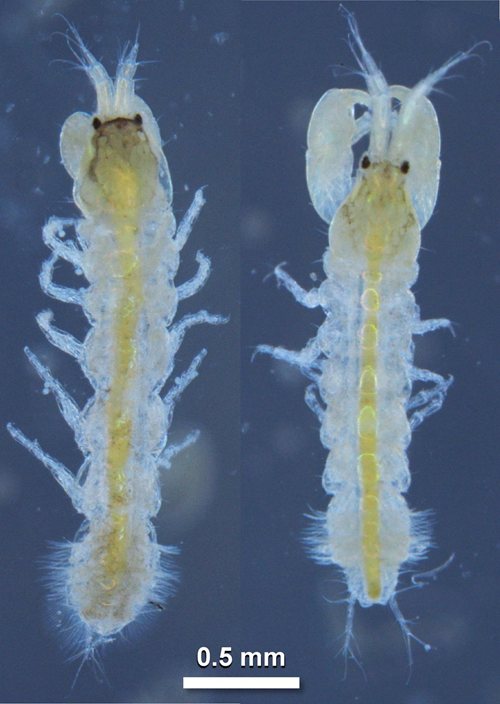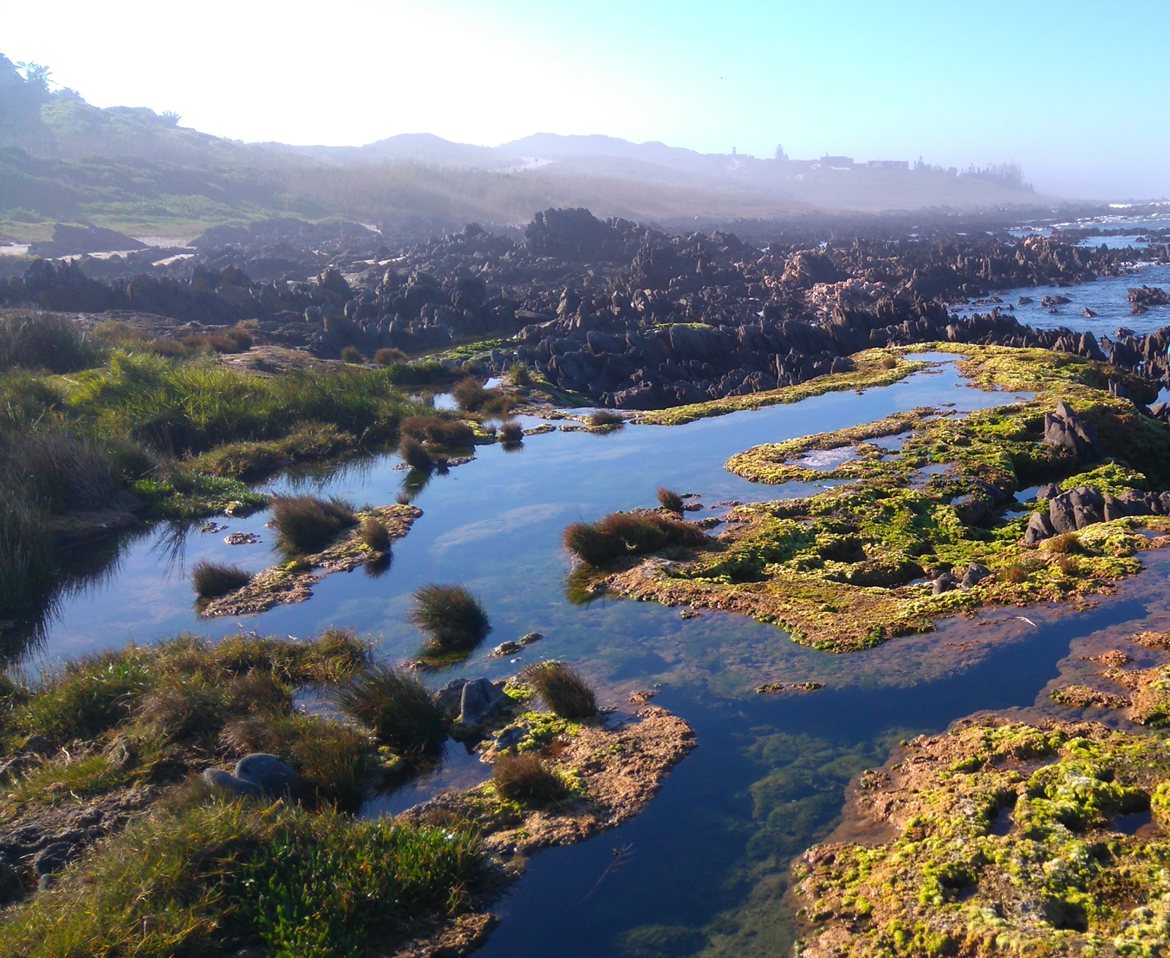These ‘stromatolite’ formations, as they are called, are remarkably similar to Earth’s earliest living environments and offer unique glimpses into what life might have been like from 3.5 billion years ago. It was in this world where Dr Gavin Rishworth, a postdoctoral research fellow at the Nelson Mandela University, discovered a species unknown to science hidden in the stromatolite crevices.
The stromatolites were first identified several years ago by Professor Renzo Perissinotto, the incumbent SARChI Chair in Shallow Water Ecosystems at the University, and Dr Thomas Bornman, the SAEON Elwandle Coastal Node Manager. These habitats have since been a fruitful research venture for the University. Scientists have long known that the cyanobacteria building the ancient stromatolites were largely responsible for flooding Earth’s atmosphere with oxygen some two billion years ago – we wouldn’t even be here if not for stromatolites.
Only a remnant of these ecosystems has survived today because most modern conditions aren’t suitable. Remarkably, the stromatolites growing along the Port Elizabeth coastline flourish in spite of this, a finding that came out from Dr Rishworth’s PhD at the Nelson Mandela University. They are a national biological treasure; a phenomenon that occurs only in exceptional circumstances around the globe.
Rather than eating their stromatolite home, the tiny worm and crustacean residents use the stromatolites as a miniature refuge to escape predators or extreme temperatures. This is unusual, as in most other ecosystems these organisms would disrupt and destroy the stromatolites while they burrow and eat their way through it.
One creature, a prawn-like organism called a ‘tanaid’, less than half a centimetre in length, forms a prominent part of the stromatolite community. Excitingly, a paper describing this creature as a completely new species to science was published recently in the journal Marine Biodiversity. This discovery was led by Dr Rishworth, together with Prof Perissinotto and a collaborator from the University of Lodz in Poland, Dr Magdalena Błażewicz.
The authors have named it ‘Sinelobus stromatoliticus’ after the extraordinary habitat in which it is found. Although small and inconspicuous, this creature plays a pivotal role as a gardener, trimming and consuming excess seaweed to ensure that this doesn’t overgrow the light or nutrients necessary for the stromatolite itself.
Prof Perissinotto encouraged Dr Rishworth to pursue the challenge of describing this new species. There is a critical skills shortage of taxonomists (scientists who describe and classify species) globally despite the potential valuable insight and opportunities which new species continually reveal. It is predicted that some of the untapped medicinal and healthcare revelations might come from products naturally-produced. Until the extent of biodiversity is recognised and explored, unknown species and their opportunities or roles might be lost before we realise their function due to the rapidly increasing rate of species extinction.
The discovery of new species is not commonplace. This represents an exciting instalment in the research focus of the Nelson Mandela University and its burgeoning effort towards an Ocean Sciences socio-economic solution to some of the challenges facing South Africa.
More information can be requested from Dr Gavin Rishworth:
gavin.rishworth@mandela.ac.za ; +27 41 504 2852
Rishworth, GM, Perissinotto, R, & Blazewicz, M (2018) Sinelobus stromatoliticus sp. nov. (Peracarida: Tanaidacea) found within extant peritidal stromatolites. Marine Biodiversity (in press) doi:10.1007/s12526-018-0851-3.
This paper can be freely accessed (read-only) at: http://rdcu.be/HcJl

A new species discovered living in the stromatolites near Nelson Mandela University: Sinelobus stromatoliticus (a tanaid crustacean)

A modern stromatolite growing at Seaview near Port Elizabeth, South Africa, one of the sites where a new species of tanaid crustacean was discovered.